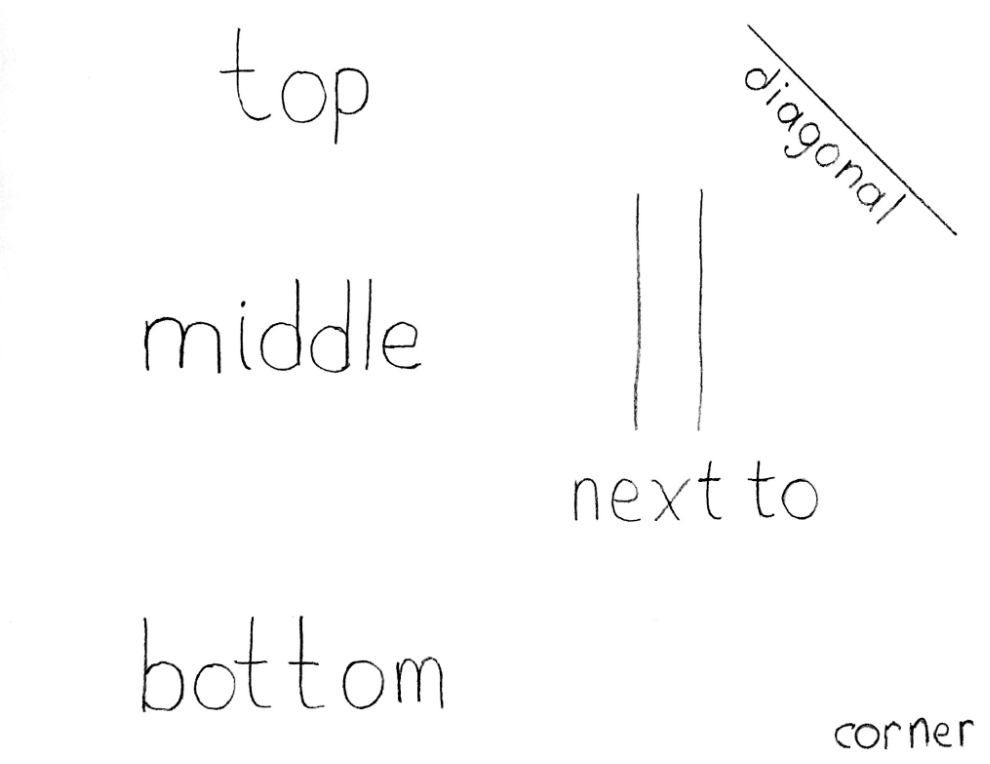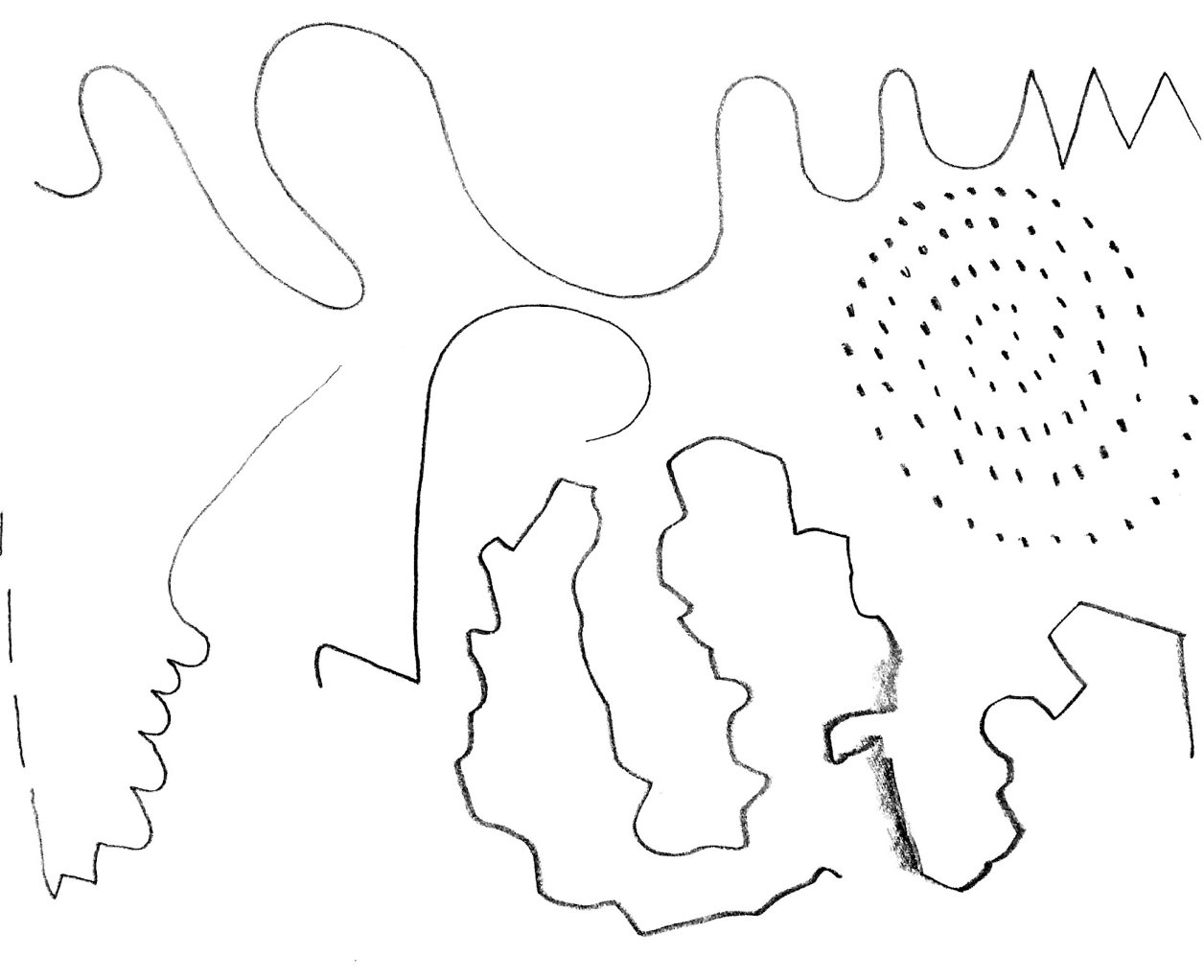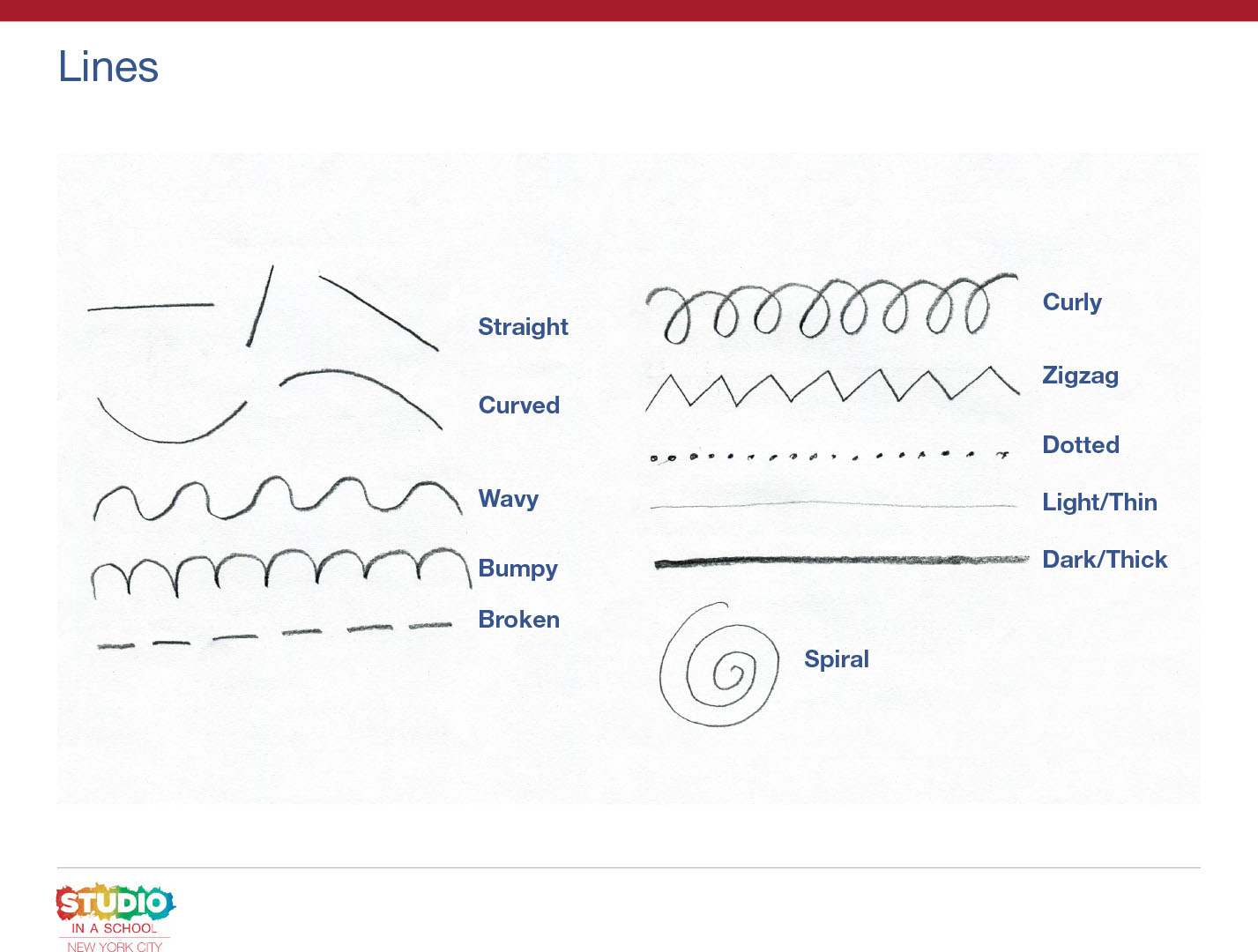Overview
Students will reflect on their art making using close-looking, speaking, writing, and/or sketchbook prompts.
Grade Level
K-2
Media
Drawing and Collage
Theme/ Big Idea
Everything we see in the world around us is made up of lines and shapes.
Essential Question
How can I look closely to find lines and shapes, and use them to make something new?
Materials and Tools
- Pencil
- Sketchbook or one to two pieces of paper
- Line drawing from the previous lesson
Activities
Note: The following activities are written with sample language you may use with your students. Following the art-making lesson, you may choose as many reflection activities as desired for students to work on in class or independently.
Step 1: Close Looking/Sharing Student Work (10 minutes)
Hello, artists! Today we are going to continue exploring lines by looking closely at the drawings we made when we went on a scavenger hunt for lines.

Take a close look at your drawing.
- What lines did you draw?
- Where did you draw them on your paper?
Let’s find some different lines together!
Hold up your own work and describe the lines that you drew, pointing to them as you describe. For example, you might say: I drew a straight line in the middle of my paper. Did you draw a straight line? Point to it! Where did you draw it on your paper?
Model finding all the lines you drew and where they are located on your paper, using the following vocabulary words: top, middle, bottom, corner, diagonal, next to.

- Can you find lines that are far apart?
- Can you find lines that are close together?
- Can you find two lines that cross each other?
- Can you find two lines that connect?
Step 2: Sketchbook Activity (10-15 minutes)
Now that you have noticed some lines around you, try inventing your own lines.

To invent means to make something new. Artists love to invent new things! In your sketchbook, you are going to invent at least five new lines. The lines can be combinations of lines you know, like a dotted spiral or a zigzag that turns into a wavy line.
Model inventing a line by combining two different lines: I’m going to start by drawing a [type of line].
- What kind of line do you think I should combine it with?
Take suggestions from students.
Great idea! I’m going to combine it with a [different type of line]. Now I have a new line that I invented.
- What do you think I should call my new line?
Now it’s your turn.
- What new lines will you invent?
After students draw their invented lines, ask:
- What new lines did you invent?
- What name would you call your new lines?
Step 3: Writing Activity: (10 minutes)
Now we are going to write about our artwork. Choose one line in your drawing you want to describe.
- What kind of line is it?
- Where did you draw it on your paper?
Based on your students’ writing skills, choose from the options below.
Option 1: Write three sentences that tell us what kind of line you drew and where you drew it.
Option 2: Use the sentence frame below to write a sentence about your artwork.
I drew a ___________ line ______________________ of my paper.
zigzag
wavy
curly
spiral
straight
curved
thick
thin
dotted
bumpy
at the top
in the middle
at the bottom
in the corner
Option 3: Label your drawing with the vocabulary words above.
Now you can do this on your own!
Step 4: Close Looking (10-15 minutes)
Let’s look closely at an artwork by the artist Albrecht Dürer.

Have you ever seen this animal before? It’s called a rhinoceros. The artist, Albrecht Dürer, never saw a rhinoceros, or even a photograph of one! He made this artwork by reading about a rhinoceros and picturing it in his imagination.
He used lots of different lines to make this drawing.
- What lines do you see?
- Where do you see those lines?
- How do you think it would feel to touch the different parts of this rhinoceros?
Step 5: Sketchbook Prompt
Draw an animal, real or imaginary, using at least five different types of lines.
Resources

When a Line Bends a Shape Begins by Rhonda Gowler Greene
The Rhinoceros by Albrecht Dürer
Adaptations
for Students with Disabilities
- Using bodies: Students can draw with their hand in the air or use their body to form a line by bending or moving like the line
- Using sound: Students can draw one line with their bodies and think about what sound it might make
